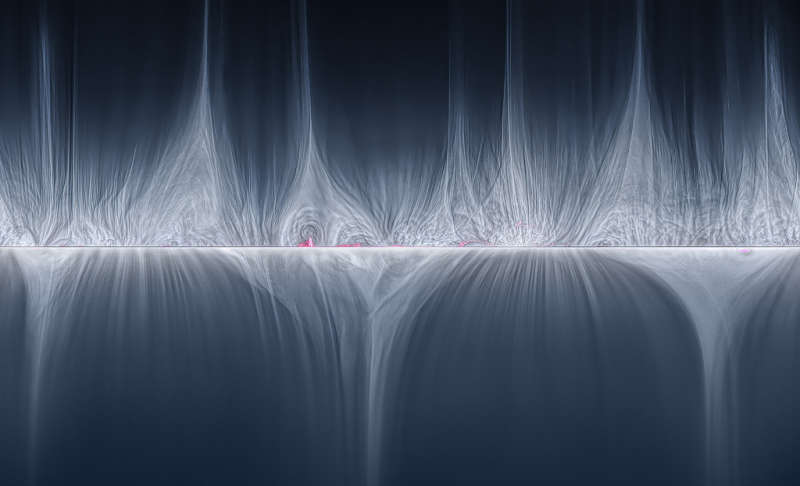Credit & Copyright: Peter Ward
(Barden Ridge Observatory)
Explanation:
Changes in the
alluring solar corona
are detailed in this
creative composite image
mapping the dynamic outer atmosphere of the Sun during two separate total solar eclipses.
Unwrapped from the complete circle of the eclipsed Sun's edge
to a rectangle and mirrored, the entire solar corona is shown
during the
2017 eclipse (bottom)
seen from Jackson Hole, Wyoming, and the
2023 eclipse from Exmouth, Western Australia.
While the 2017 eclipse was near a minimum in the
Sun's 11 year activity cycle,
the 2023 eclipse was closer to solar maximum.
The 2023 solar corona hints at the dramatically different character
of the active Sun,
with many streamers and pinkish prominences arising along the solar limb.
Of course, the solar corona is only easily visible to the eye
while standing in the shadow of the Moon.
NASA Coverage:
Total
Solar Eclipse of 2024 April 8
1999 2000 2001 2002 2003 2004 2005 2006 2007 2008 2009 2010 2011 2012 2013 2014 2015 2016 2017 2018 2019 2020 2021 2022 2023 2024 2025 |
Yanvar' Fevral' Mart Aprel' Mai Iyun' Iyul' Avgust Sentyabr' Oktyabr' Noyabr' Dekabr' |
NASA Web Site Statements, Warnings, and Disclaimers
NASA Official: Jay Norris. Specific rights apply.
A service of: LHEA at NASA / GSFC
& Michigan Tech. U.
|
Publikacii s klyuchevymi slovami:
total solar eclipse - Solar Corona - polnoe solnechnoe zatmenie - Solnechnaya korona
Publikacii so slovami: total solar eclipse - Solar Corona - polnoe solnechnoe zatmenie - Solnechnaya korona | |
Sm. takzhe:
Vse publikacii na tu zhe temu >> | |
